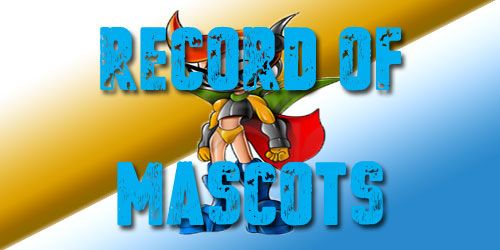 22 July 19
22 July 19
Record Of Mascots
Background of Mascots
The history of mascots dates back to cavemen and early societies who hunted for their livelihood. Early company accounts of masked animals, often resembling wildlife were drawn or etched on cave walls and depicted in historical skill. Totem poles have been filled with likenesses of animals in ancient ethnicities. These likenesses happen to be similar to the concept of the staff mascots evident on basketball fields and baseball courts. Usually in ancient periods the history of mascots' implies that these likenesses were often worshiped. This is particularly true during occasions of looking and harvest. Ancient tribal people would dress up within the likeness of pets or animals or those on totem poles to incite goodwill from them. They believed this would help with productive hunts and bountiful harvests. Also, ancient civilizations would dress up in masks or pet animal like characters for uses of fertility. Various would dance inside the Mascot Character Design Company like outfit to bring about fertility for folks in their tribe or town.
Advancement of Mascots
Society has arrive quite a distance in its existing release of mascots. Mascots once we know them today have been around in the same type and incarnation because the 1800's. They began to sprout on senior high school and college participating in fields during that era. Often live animals were used as the official mascots of groups, and athletes have been proudly putting on a patch while using mascot on the uniform. The upkeep and maintenance of live pets or animals became pricey and cumbersome, so that they were largely removed. They developed to resemble the puppet-like variations we see right now.
They've got Personality
Mascots are actually seen as performers and entertainers with traits that now make it an art. They have come to be an embodiment of what the team is and could correlate to the positioning of the workforce, or some other overriding characteristic that makes the team unique. Effective mascots do not learn their phase presence from the classroom. To be able to turn out to be one with the character and mirror this through actual physical action is crucial to being truly a believable mascot. The person must be able to put their personality aside and definitely get into identity. Mascots are especially popular with kids. They need to act in a manner that is child-friendly and not intimidating.
The greater personable a mascot can be, a lot more approachable they'll be. Plus they will undoubtedly be well-received by fans of all age ranges. The position of mascot wields a lot of electric power over crowds at game titles. They have the ability to either really include the public in the game, or make a poor effort and result in the crowd to turn on them.
Mascots as Symbols
Throughout the record of mascots, symbology is a major part that keeps rising to the surface. Mascots tend to be tagged with brands that suggest gender and/or specific attributes. For example, a mascot known as Robbie the Rabbit would point out a male rabbit that's fast on its feet. This does too much to create a graphic in your brain of supporters and anyone taking into consideration the particular team the mascot represents. Lovers will also arrived at assume the mascot to react in consistent and specific methods to them over a continual basis.
If a mascot includes a habit of doing a certain boogie, fans may be disappointed in the event the Mascot Character Design Agency determines not to carry out the famous boogie on game working day. It is a unique job along with the rich history of mascots continues to unfold as time goes by. It is a position that requires creativity, consistency, individuality, and sturdy symbology. Mascots may not be worshiped like they were in traditional societies, however they are powerful pictures etched upon the brains of fans just about everywhere. Often the team is definitely synonymous while using mascot itself.


Comments